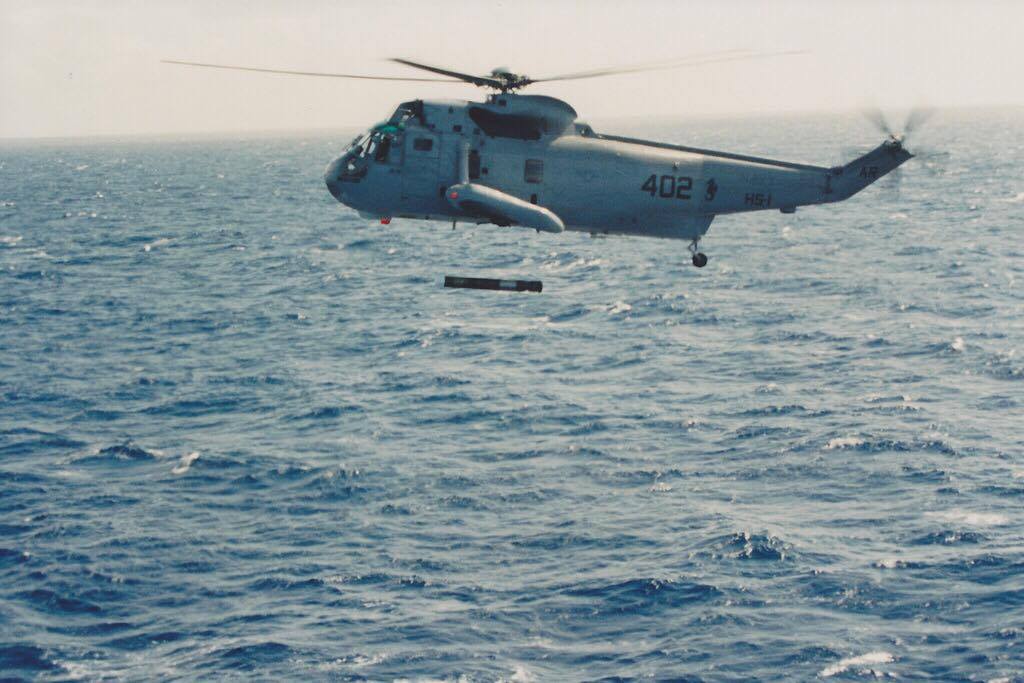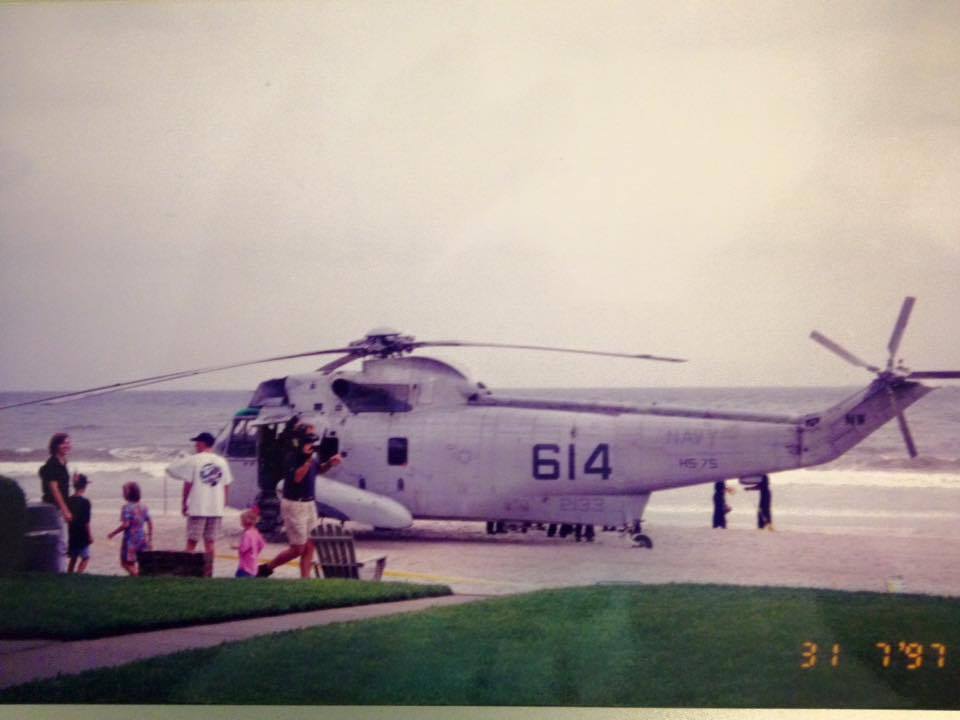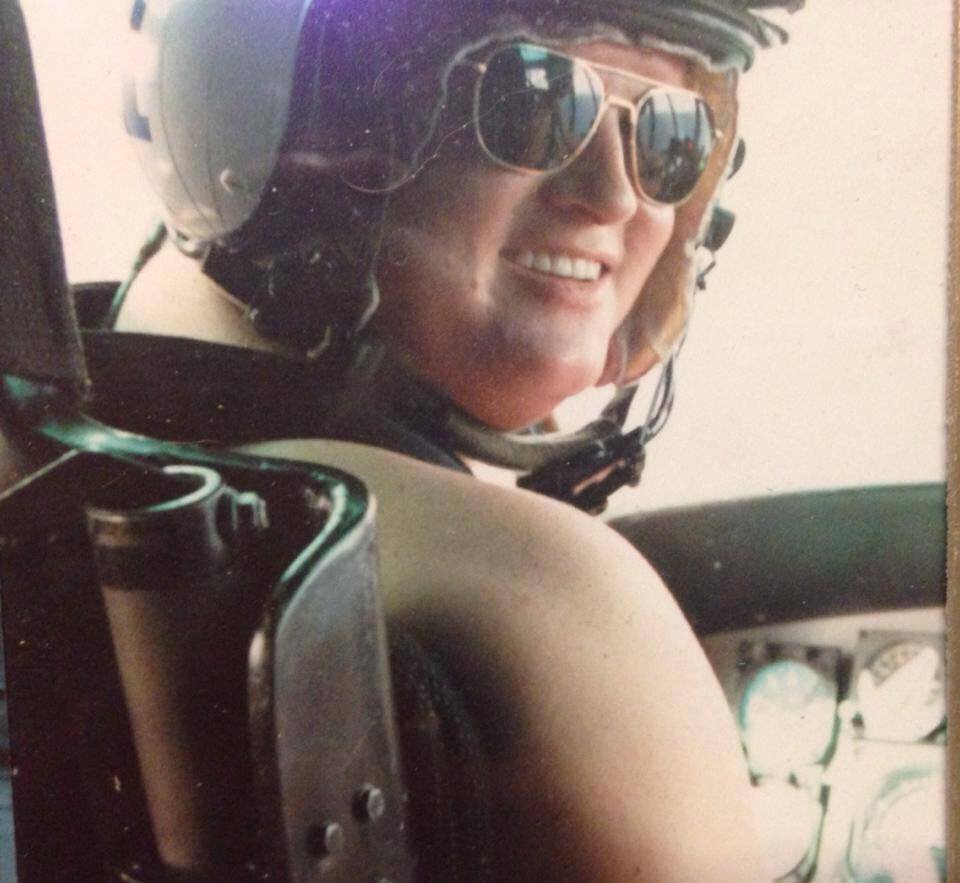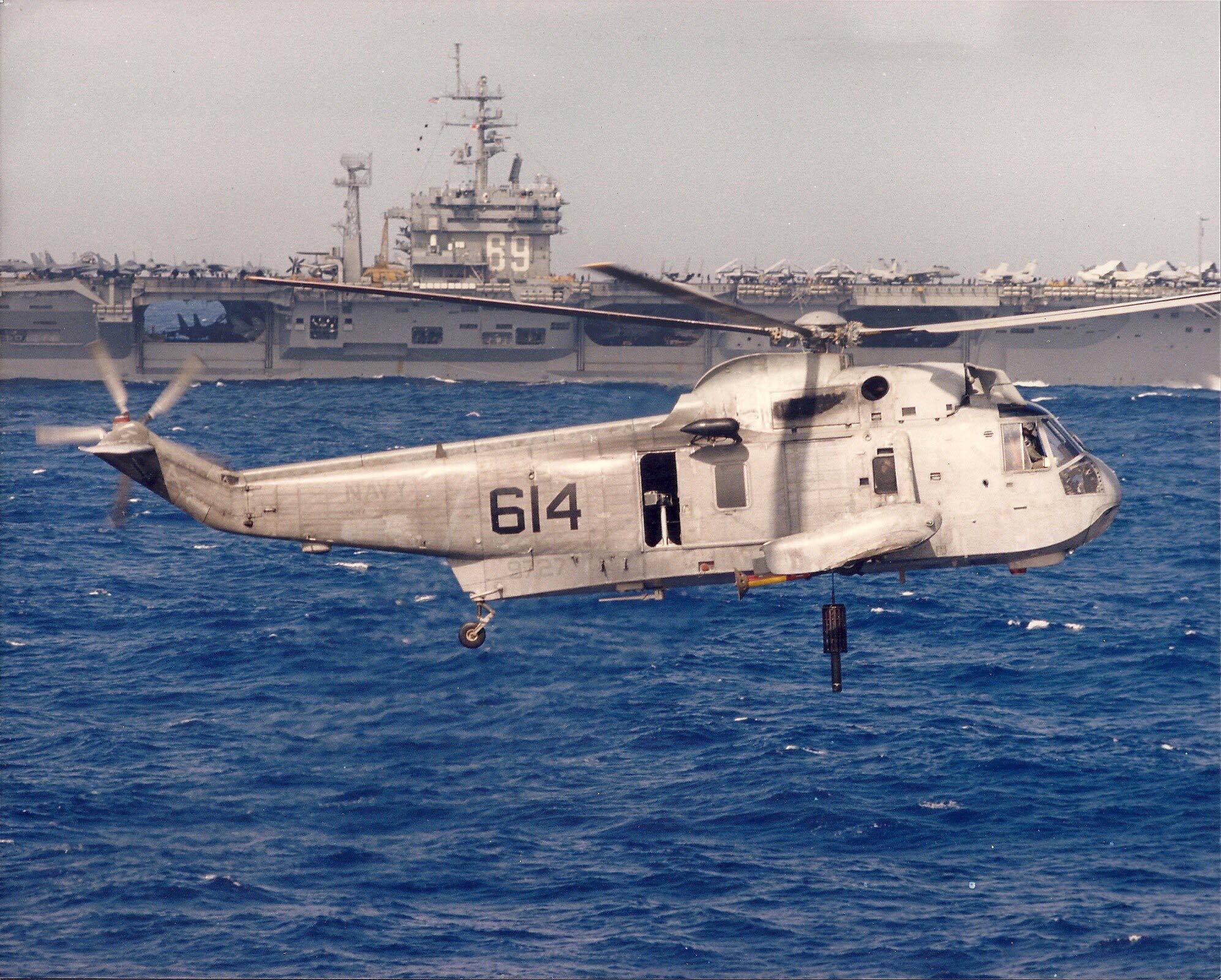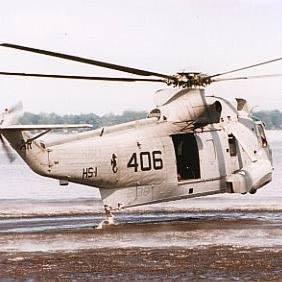In this Episode of the Hangar Deck Podcast, the team discusses the Boeing 747-400 Cargo Aircraft with Pilot Brian Mills.
The Boeing 747-400 is a major development and the best-selling model of the Boeing 747 family of jet airliners. While retaining the four-engine wide-body layout of its predecessors, the 747-400 embodies numerous technological and structural changes to produce a more efficient airframe. Its most distinguishing features versus preceding 747 models are 6-foot (1.8 m) winglets mounted on 6-foot (1.8 m) wing tip extensions, which are found on all 747-400s except for Japanese domestic market versions.
The 747-400 is equipped with a two-crew glass cockpit, which dispenses with the need for a flight engineer, along with more fuel-efficient engines, an optional fuel tank in the horizontal stabilizer, and revised fuselage/wing fairings. The aircraft also features an all-new interior with upgraded in-flight entertainment architecture. As on the 747-300, passenger variants include a stretched upper deck as standard. The model has a maximum capacity of 660 passengers with the 747-400D variant, and can fly non-stop for up to 7,670 nautical miles (14,200 km) with maximum payload, depending on model.
Northwest Airlines first placed the 747-400 in commercial service in February 9, 1989. The 747-400 was produced in passenger (−400), freighter (−400F), combi (−400M), domestic (−400D), extended range passenger (−400ER) and extended range freighter (−400ERF) versions. The 747-400 is the second-most recent version of the Boeing 747 aircraft family, having been superseded by the more economical and advanced Boeing 747-8. The last −400 model was delivered in December 2009.
As many 747-400s are now more than 20 years old, airlines are beginning to replace them. Airlines using the 747-400 have accelerated its retirement (as at 2015) and are replacing the model with more fuel efficient aircraft. The 747-400’s leasing, resale and salvage value has dropped steeply because it is relatively expensive to operate. In most cases, it is being replaced with wide-body twin-engine aircraft like B777 or A330. The change in emphasis from hub and spoke operations to point-to-point flights has also reduced the need for jumbo jets. For example, Delta Airlines has reduced the number of flights it operates from the United States to Narita International Airport that are intended to transfer passengers to other destinations in Asia. Instead, Delta will utilize twin-engine widebody aircraft operating from an expanded hub at Seattle-Tacoma International Airport. Total capacity will be cut, but consequentially load factors will increase. In April 2015, Delta announced it would accelerate the retirement of its 747-400 aircraft and replace them either with Airbus A330 aircraft reassigned from cancelled international runs, or with new Airbus A350 aircraft now on order. That will leave just six 747s flying for the airline in 2015. Delta could not keep the 747s full without deeply discounting ticket prices; the discounts and increased maintenance required of a four-engine aircraft led to a drag on profits. Moreover, economic weakness in air cargo markets has slowed demand for cargo conversions. Since the cost of replacing a 747-400 is high (an airline must purchase or lease another wide-body), some operators choose to fly the 747-400 to the conclusion of its accepted useful life and then scrap it. The current parts resale value for this aircraft has been reduced to its engines. Several airlines have retired their 747-400 from the trans-pacific market. Remaining operators in 2014 include Qantas, British Airways and United. United is retaining its 23 747-400s for now, but the airline’s deployment of them also reflects a change in emphasis from Asian hubs to domestic hubs, meaning that it will have more direct flights from the United States to secondary Asian market cities. This may reduce the need for jumbo jets.
747-400
A large mostly-white four-engine jet airliner with golden stylized bird design, on approach towards left of screen with landing gear extended Boeing 747-400 of Singapore Airlines, the type’s first international operator.
The original variant of the redesigned 747, the 747-400 debuted an increased wingspan, winglets, revised engines, and a glass cockpit which removed the need for a flight engineer. The type also featured the stretched upper deck (SUD) introduced with the 747-300. The passenger model formed the bulk of 747-400s sold, and 442 were built.
In 1989, a Qantas 747-400 flew non-stop from London to Sydney, a distance of 9,720 nmi (11,190 mi, 18,001 km), in 20 hours and 9 minutes to set a commercial aircraft world distance record. As of 2014, this is the fastest heavyweight flight between London and Sydney. This was a delivery flight with no commercial passengers or freight on board. During testing, the first 747-400 built also set a world record for the heaviest airliner takeoff on June 27, 1988, on a flight to simulate heavy-weight stalls. The flight had a takeoff weight of 892,450 pounds (404,810 kg), and in order to satisfy Fédération Aéronautique Internationale regulations, the aircraft climbed to a height of 6,562 feet (2,000 m).
747-400F
The 747-400F (Freighter) is an all freight version of the 747-400. While using the updated systems and wing design of the passenger versions, it features the original short upper deck found on the classic 747s in order to save weight. The model’s first flight was on May 4, 1993, and it entered service with Cargolux on November 17, 1993. Major customers included Atlas Air, Cargolux, China Airlines, Korean Air, Nippon Cargo Airlines, Polar Air Cargo, and Singapore Airlines. The −400F can be easily distinguished from the passenger −400 by its shorter upper-deck hump and lack of windows along the main deck.
The 747-400F has a main deck nose door and a mechanized cargo handling system. The nose door swings up so that pallets or containers up to 40 ft (12 m) can be loaded straight in on motor-driven rollers. An optional main deck side cargo door (like the 747-400M (Combi)) allows loading of dimensionally taller cargo modules. A lower deck (“belly”) side door allows loading of unit load devices (ULD) up to 1,63 m height. Boeing delivered 126 Boeing 747-400F aircraft with no unfilled orders as of November 2009. The last −400F was delivered to Nippon Cargo Airlines on August 2, 2008.
747-400M
A KLM Boeing 747-400 Combi, on short final to JFK Airport in New York City
The 747-400M (a passenger/freight or “Combi” variant) first flew on June 30, 1989 and entered service with KLM on September 12, 1989. Based on the successful Combi versions of the Classic 747s, the −400M has a large cargo door fitted to the rear of the fuselage for freight loading to the aft main deck cargo hold. A locked partition separates the cargo area from the forward passenger cabin, and the −400M also features additional fire protection, a strengthened main deck floor, a roller-conveyor system, and passenger-to-cargo conversion equipment. The last 747-400M was delivered to KLM on April 10, 2002.
747-400D
The 747-400D (Domestic) is a high density seating model developed for short-haul, high-volume domestic Japanese flights. This model is capable of seating a maximum of 568 passengers in a two-class configuration or 660 passengers in a single-class configuration.
The −400D lacks the wingtip extensions and winglets included on other variants. Winglets would provide minimal benefits on short-haul routes, while adding extra weight and cost. The −400D may be converted to the long range version if needed. The 747-400D can be distinguished from the otherwise similar-looking 747-300 by the extra windows on the upper deck. These allow for extra seating at the rear of the upper deck, where a galley would normally be situated on longer flights. In total, 19 of the type were built, with the last example delivered to All Nippon Airways on February 11, 1996. This variant was retired with ANA retiring their last 747 on March 31, 2014.
747-400ER
The 747-400ER (Extended Range) was launched on November 28, 2000 following an order by Qantas for six aircraft. The model was commonly referred to as the ‘910k’ signifying its maximum weight achieved via structural modifications and modified landing gear. This was the only order for the passenger version, chosen by Qantas to allow for full loads between Melbourne and Los Angeles, particularly in the western direction. The −400ER can fly 500 miles (805 km) further, or carry 15,000 lb (6,800 kg) more freight. The first 747-400ER was used as a test flight airplane and painted in Boeing colours, registration N747ER. Qantas received the first delivery of a 747−400ER Registration VH-OEF on October 31, 2002; this was the second airplane built. The flight test airplane was refurbished and delivered in Qantas livery. The 747-400ER included the option of one or two additional 3,240 US gallon body fuel tanks in the forward cargo hold, but no customers ordered the tanks. Manufactured by Marshall Aerospace, these tanks utilized metal to metal honeycomb-bonded technology to achieve a high fuel volume-to-dry weight ratio. The tanks featured a double wall, integrated venting system, and achieve fuel control via a modified Fuel System Management Card (FSMC) which optimizes fuel transfer into the Center Wing Tank (CWT) in flight along with the fuel transfer from the Horizontal Stabiliser Tank (HST). The tank is removable using tooling that interfaces with the cargo loading system. Similar technology has been used by Marshall in the development of body fuel tanks for the Boeing 777-200LR and Boeing P-8A Poseidon. Other changes to the 747-400ER include relocation of oxygen system components and the potable water system tanks and pumps since the body fuel tanks prevent access to the standard locations.
747-400ERF
Large four-engine jet freighter whose body are painted in two blue and white blue half has large lettering. The stabilizer is halves; the top mostly white. It is on approach towards left of screen with landing gear extended
The 747-400ERF (747-400ER Freighter) is the freight version of the −400ER, launched on April 30, 2001.[17] The 747-400ERF is similar to the 747-400F, except for increased gross weight capability which allows it to carry more cargo weight. Unlike the 747-400ER, no customers ordered the optional body fuel tanks (cargo compartment fuel tanks). The 747-400ERF has a maximum takeoff weight of 910,000 pounds (412,769 kg) and a maximum payload of 248,600 pounds (112,760 kg). It offers cargo airlines the choice of either adding 22,000 pounds (9,980 kg) more payload than other 747-400 freighter variants, or adding 525 nautical miles (972 km) to the maximum range.
The -400ERF has a range of 5,700 miles (9,200 km) with maximum payload, about 326 miles (525 km) farther than the standard 747-400 freighter, and has a strengthened fuselage, landing gear, and parts of its wing, along with new, larger tires. The first −400ERF was delivered to Air France (via ILFC) on October 17, 2002. Boeing has delivered 40 Boeing 747-400ERFs with no outstanding orders as of 2009. The last 747-400 was a −400ERF delivered on December 22, 2009 to Kalitta Air. The new 747-8 Freighter has more payload capacity, but less range than the 747-400ERF.
747-400 Boeing Converted Freighter
The 747-400BCF (Boeing Converted Freighter), formerly known as the 747-400SF (Special Freighter), is a conversion program for standard passenger 747-400s. The project was launched in 2004 and will be done by approved contractors such as TAECO, KAL Aerospace and SIA Engineering. The first Boeing 747-400BCF was redelivered to Cathay Pacific Cargo and entered service on December 19, 2005. This kind of converting procedure is located at Xiamen Gaoqi International Airport in China.
The 747-400BDSF (Bedek Special Freighter) is another converted version freighter by Israel Aerospace Industries (IAI). The first 747-400BDSF was redelivered to Air China Cargo.[citation needed] EVA Air’s several Boeing 747-45EM planes have been converted as BDSF model after retiring from passenger service upon the delivery of Boeing 777-300ER planes. This kind of converting procedure is located at Ben Gurion International Airport in Tel Aviv, Israel.
Neither the 747-400BCF nor the 747-400BDSF have a nose cargo door; freight can only be loaded through the side cargo door.
747 Large Cargo Freighter
Boeing announced in October 2003 that, because of the amount of time involved with marine shipping, air transport would be the primary method of transporting parts for the Boeing 787 Dreamliner. Pre-owned passenger 747-400 aircraft have been converted into an outsize, “Large Cargo Freighter” (LCF) configuration to ferry sub-assemblies to Everett, Washington for final assembly. The LCF has a bulging fuselage similar to that of the Aero Spacelines Super Guppy or Airbus Beluga cargo aircraft.
The conversion, designed by Boeing engineers from Puget Sound, Moscow and Canoga Park, Cal., and Gamesa Aeronáutica in Spain, was carried out in Taiwan by a subsidiary of the Evergreen Group. Boeing purchased four second-hand aircraft and had them all converted; the fourth and final LCF took its first flight in January 2010.
Delivery times are as low as a day using the 747 LCF, compared to up to 30 days for deliveries by ship. The LCF has the largest cargo hold of any aircraft and can hold three times the volume of a 747-400F freighter. The LCF is not a Boeing production model and has not been offered for sale to any customers. The LCFs are intended for Boeing’s exclusive use.
In this Episode, Pitchlock Pete’s panel of Aviation Contributers included Fast Eddie Raging Rick, and our special Guest Mr. Brian Mills.
We would like to thank our listeners for the continued support on our adventure. The team has reached a milestone of over 7,000 downloads and continue to grow our shows and audience. If you would like to be a guest on The Hangar Deck Podcast, contact us at Pitchlockpete@thehangardeck.com. We continue to strive to bring our listeners a great and fun listening experience.




